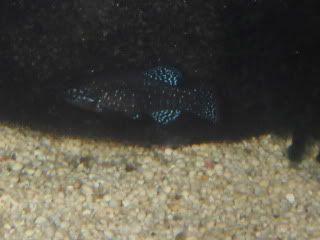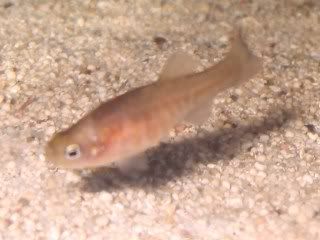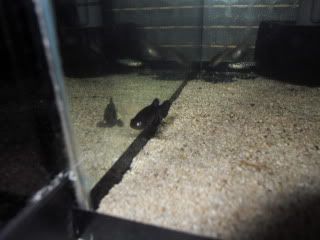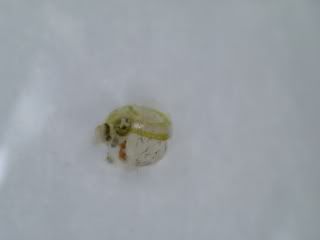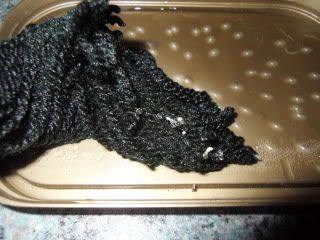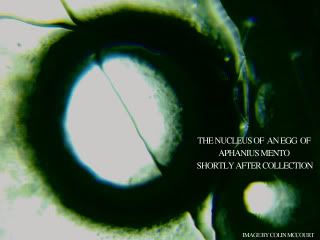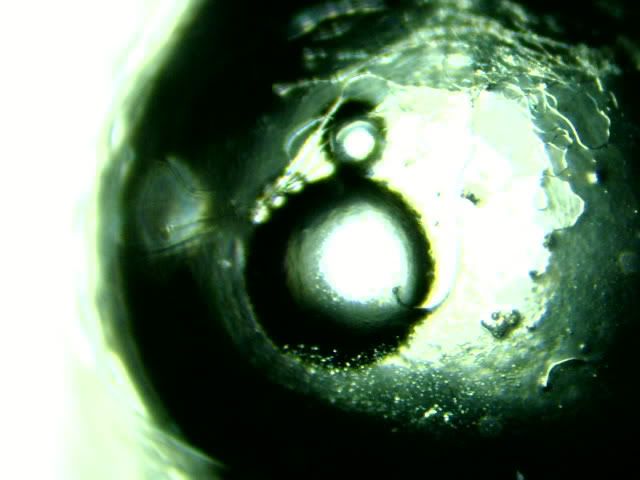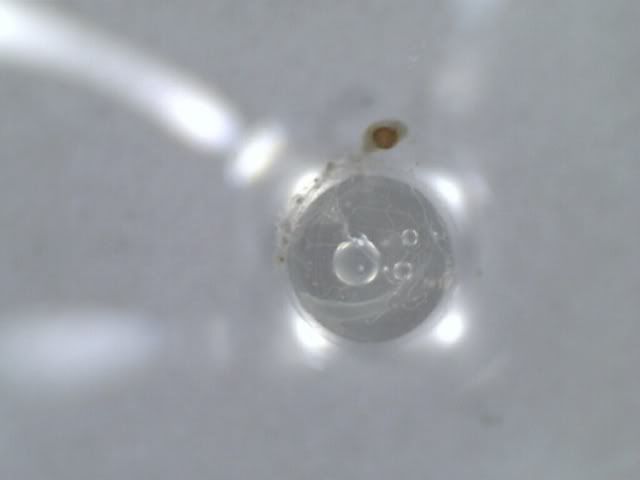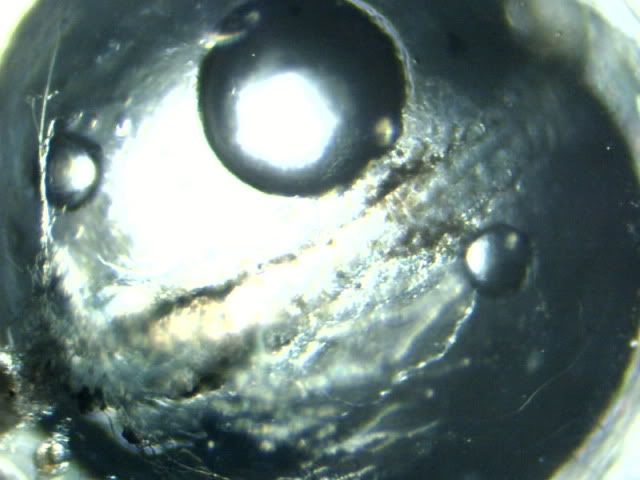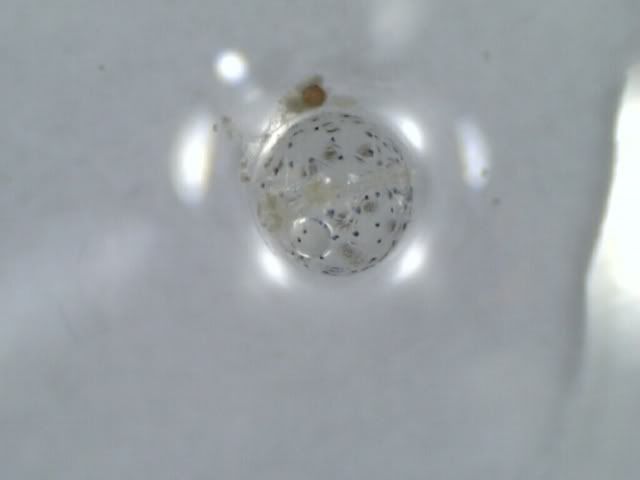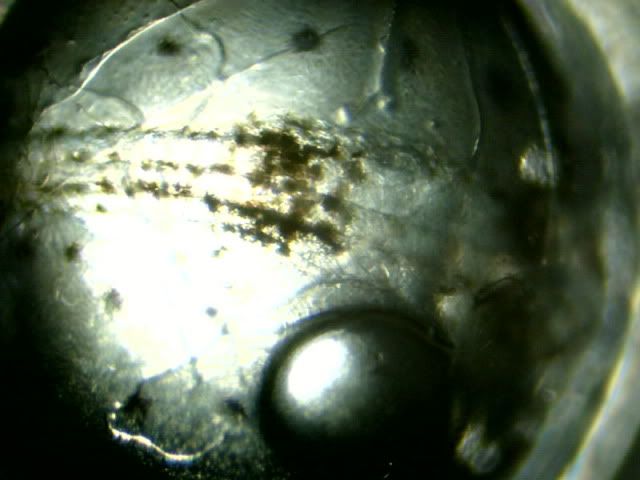Retirement and forum shutdown (17 Jan 2022)
Hi,
John Howell who has managed the forum for years is getting on and wishes to retire from the role of managing it.
Over the years, he has managed the forum through good days and bad days and he has always been fair.
He has managed to bring his passion for fish keeping to the forum and keep it going for so long.
I wish to thank John for his hard work in keeping the forum going.
With John wishing to "retire" from the role of managing the forum and the forum receiving very little traffic, I think we must agree that forum has come to a natural conclusion and it's time to put it to rest.
I am proposing that the forum be made read-only from March 2022 onwards and that no new users or content be created. The website is still registered for several more years, so the content will still be accessible but no new topics or replies will be allowed.
If there is interest from the ITFS or other fish keeping clubs, we may redirect traffic to them or to a Facebook group but will not actively manage it.
I'd like to thank everyone over the years who helped with forum, posted a reply, started a new topic, ask a question and helped a newbie in fish keeping. And thank you to the sponsors who helped us along the away. Hopefully it made the hobby stronger.
I'd especially like to thank John Howell and Valerie Rousseau for all of their contributions, without them the forum would have never been has successful.
Thank you
Darragh Sherwin
Re: Aphanius mento Zengen (Turkey)
- Puddlefish (Colin McCourt)
-
 Topic Author
Topic Author
- Offline
- Senior Member
-

- Posts: 347
- Thank you received: 10
A Persian Jewel
A personal account surrounding the husbandry of
Aphanius mento Zengen
By
Puddlefish.
Introduction
First described by Heckel in 1843 suggests that this species has been known to mankind for well over 150 years now but it has not been widely kept and bred by hobbyists until more recent times. Most killifish enthusiasts shying away from European and Mid Eastern genres due to the apparent lack of vivid colouration, preferring instead to opt for the wow factor of the African genre’s such as Aphyosemion & Nothobranchius. Today, aquarist’s awareness in habitat devastation and destruction seems to have increased the popularity of Aphanius and related European genre’s of this ilk and rightly so.
Natural History
The geographical distribution of this little jewel is pretty vast by all accounts, ranging from the Dead Sea and Jordan Valley in Israel up through Lebanon and Syria into south central Turkey and then down the Euphrates and Tigris river valleys into the Shat al Arab marshes near the Persian Gulf. Most populations prevalent in the hobby today seem to emanate from Turkey, most noticeably being the “Kirk Goz Spring” population. Whilst a great number of species from the Aphanius genre come from coastal waterways that are considered marine to brackish in their make-up, this species in question inhabits bodies of water such as springs, creeks, rivers, and small lakes which are considered by nature to be freshwater to slightly brackish, where here it lives in the shallows of the water’s edge amongst heavy vegetation to avoid predation and to establish breeding territories.
Images of male and female.
Aquisition & initial thoughts
As mentioned earlier, as a killifish enthusiast, I would have never even given a second thought to keeping any of the European – Mid Eastern species of toothcarp. Through ignorance and considering them to be a poor man’s version of what was coming out of Africa and South America. I think this very fact is or was most folk’s perception on this topic, so I don’t think I was alone in this line of thinking. I knew they had their following but I perceived it to being only a small minority of enthusiasts in a pretty much niche area of killi-keepers.
It was September 2010 and as I stood in the auction room attending the BKA convention, a bag, of what I considered to be fry of some species of fish, was thrust upon me by one of the lads from TDC aquatic “There you go lad, these are for you” was the words uttered.
The label, on the bag read “Aphanius mento Zengen (Turkey)”. My initial thoughts at that moment were “what the hell am I going to do with these”. I knew absolutely nothing about this species, how to care for it nothing. It was day one of the convention and how was I going to keep them alive let alone get them home. To be honest I was contemplating either handing them back or passing them on to some other unsuspecting soul, such was my feelings at that time. I kept them in my room and changed the water daily in the bag, half expecting them to snuff it by the time the convention was over. Needless to say they survived.
At the final day’s auction I bought some cracking fish and enlisted the services of a fellow member and friend to do the honours of posting my purchases over to me in Northern Ireland the following week. (This he did without quibble). Getting the fish home and allocating tanks was not a problem, at least not for the fish I had paid good money for. But what was I going to do with the Mento.
I hadn’t really given this a thought to be honest, they were very small and by this time they looked like they needed a good feed.
I decided to keep them and afforded them a small “show tank” (12x8x8). Not worrying too much about their well being other than to feed them every day and to perform weekly water-changes which coincided with what I was doing with the other tank maintenance that was going on. Still these buggers survived.
I started out with six tiny silver fish and as the months rolled by I glanced at them every now and then, still I had six silver fish, admittedly a little bigger given the passing of time. “All bloody females” I would exclaim, I even asked around to see if I could get a male, but as it was mid-winter the chances of that were virtually zilch.
Then one day to my amazement one of these fish started to darken, could this be a male...yes ....yes...yes..
At this point my interest in this species soared as I began to read all the literature I could find on this and related topics, then I began harassing folks such as Jim Warner and Nigel Hunter for tiny snippets of information on their husbandry. With having at least a pair, I now had the makings of a breeding group.
The male just wont keep still.
Tanks and Equipment
As mentioned previously, I wasn’t really affording or devoting much interest in this little group up until the point of the male colouring up. I gave them a small tank (they themselves were only small) measuring 12x8x8. Knowing that they needed pretty hard water, I used 100% local tap-water for this and added some aragonite sand as a base. A small air driven sponge filter was added alongside a floating mop. Their quarters were sandwiched between two heated aquaria so the only heat they would get in my garage would be what they could gather from these other tanks. They were provided with no artificial lighting. The only indirect form of light that gets to the tank is from the garage window
Water Conditions
Our local Tap-water, whilst not ideal, is very hard and has a pH of around 7.6 so this, naturally, was what I was going to use.
A little conditioner was added to their waster-changes alongside a spoon full of cooking salt and that was basically it as far as providing them with any specialist treatment. They seemed to like the environment in which they were living, the temperature of the water would be in the region of 60’F and they seem well adapted to this, as they are pretty active, they don’t stop and lounge around like most killifish I’d kept previously, always darting around the tank.
Diet
Now, with taking a more vested interest in this fish I feed them predominately live-food, whereas before, when they were smaller, I was using spurilina and staple flake. They now enjoy morsels such as Fruitfly, Grindal & Whiteworm, Newly hatched Brineshrimp and Moina macrocopa whilst still retaining some element of vegetable matter in their diet through the dried food.
Temperament
The males of this little fish, for its size, seems to have developed quite a reputation for being aggressive, with reports of rival males being battered to death alongside unresponsive females, even some accounts of them being used as dither fish with cichlids and being more than capable of holding their own.
Whilst I cannot speak for all the locational varieties of this species, the contingent from Zengen (and I may live to eat my words) must be quite placid by comparison. Currently, in the small confines of their tank I now have 3 large females, one dominant male and a smaller male (both coloured up). I lost one of the original six early on, it being the runt.
Barring the odd short chase I have witnessed no real aggression as such, not yet anyway. The fish are what I would consider “still only young”, and maybe this aggressive trait will manifest itself later on as the fish mature somewhat, I will have to wait and see. For the meantime all is pretty much peaceful.
Breeding
Taking heed of all the literature I’ve gathered especially my observations from their temperament, I decided to keep them as a group and spawn them (if I could) as such. Noticing that I was getting the odd egg here and there I decided that it was time to include another mop (sunken). I would observe that the only eggs being laid would be attached to the very bottom of the floating mop right at the point where they touched the aragonite sand base. I have, to date not had any eggs other than this locality, not even on the sunken mop. Now I know that this species will predate their own eggs and young so a daily collection of eggs must be performed if one hopes to gather some stock for the next generation. The male will keep close to and circle the lower regions of the mop and will entice the females into his little domain to spawn, he will only venture away from this point to quickly feed and dart straight back to his territory. The females on the other hand remain for the most part in open water and are not as timid or highly strung as the male.
An egg from Aphanius mento Zengen (Turkey)
Over the winter in the garage I was not getting any eggs at all, albeit the fish were still young. It is only now with the advent of Spring that everything has sprung into life, which, as suspected, this species may be considered as a seasonal spawner.
The eggs of Aphanius mento (from this location at least) are very small, they are laid singally and also in very sticky strands of around three, they are a very clear egg with no signs of colouration. As mentioned earlier I collect the eggs on a daily basis and place them in a small margarine tub with the same water as the parent tank. I like to add a few grains of salt at this point to try and keep fungus at bay. Here the eggs mature for around 1-2 weeks before they hatch, please note that this can vary quite a lot as this is temperature dependant.
Egg clusters of A. mento at the extreme ends of a floating mop.
I now remove the newly hatched fry with a pipette to a fresh tub of water of the same quality and begin feeding, three times per day. Surprisingly enough the fry from such a small egg are able to consume newly hatched brine-shrimp straight away. As always keep the fry tubs clean and remove any uneaten shrimp or otherwise daily. Small water changes can be performed as you do do.
A short video of an egg of this species, note: the eye and below the heart beating away
The fry of this species take a long time to mature as was evidence from my initial handout from TDC. They took ages to grow and acquire colour, perhaps around six months in total. It may well be that a higher temperature would have some effect at foreshortening this, but from my observation at a mean low Winter temp until its natural progression into Spring, this was what I personally witnessed.
Summary
This little beauty is a true gem, perhaps not given as much attention as it deserves. The colouration of the males in breeding apparel is truly a sight to behold. I was admittedly one of those many killifish fanciers around the globe that leant toward keeping the more colourful African and South American genus of toothcarp, not giving a second thought to keeping Killifish, that were, for some part, closer to home. These killifish genre’s deserve a mention more hobbyists to take an interest in them for they are experiencing the same problems and tribulations that their counterparts are experiencing in other more climatic parts of the globe, their habitats are being destroyed through various anomalies, mostly man-made. Some are extinct in the wild and some are teetering very close to the edge. So I urge folks to spare a thought for these fishes, their background, and their plight and to maybe set aside a small tank in a cool corner of their fish-house to keep these little gems from disappearing altogether. A cold water killifish species with No electricity usage to speak of what more could a killi-fancier want in these hard times.
I am indebted to Tim at TDC for passing these fish onto me otherwise I may still be viewing these, as do many others, with a certain amount of distain.
I hope you all enjoyed this personal account on this lovely little “Persian Jewel”.
Regards
P
Please Log in to join the conversation.
- JohnH (John)
-

- Offline
- Administrator
-

- Posts: 6067
- Thank you received: 857
I think I now see why the 'Mento' eggs I got last year didn't hatch, they were put into water at least 20 degrees higher than that - either that, or (as has happened SO often with eggs sent from overseas) they were X-rayed and the radiation killed the ova.
Anyway, no more posted eggs for me! I've learned my lesson (probably fifty times over - I reckon it would have been cheaper for me to go to all these places and collected the eggs myself!!!).
John
Location:
N. Tipp
We're just two lost souls swimming in a fish bowl - year after year.
ITFS member.
It's a long way to Tipperary.
Please Log in to join the conversation.
- Andrew (Andrew Taaffe)
-

- Offline
- Premium Member
-

- Posts: 580
- Thank you received: 52
Congrats on keeping a European group going - they shouldn't be overlooked
Andrew
ITFS Club Secretary
email: This email address is being protected from spambots. You need JavaScript enabled to view it.
see the ITFS tab above for more information www.irishfishkeepers.com/index.php/itfs
Please Log in to join the conversation.
- Puddlefish (Colin McCourt)
-
 Topic Author
Topic Author
- Offline
- Senior Member
-

- Posts: 347
- Thank you received: 10
Below is the first of the pictures taken with the scope, The subject is an egg of Aphanius mento Zengen and was taken with a Bresser Microscope at 10x (640x480)
Day1 (Collection) The nucleus appears to have already divided the once.
I hope to carry this experiment on until the egg eventually hatches which should satisfy two aims. (a) to show what goes on inside a fertilised killifish egg and the embryo in its early developmental stages...(b) it enables me to learn more about the working of this new scope.
Maybe Ian can give me a few tips
Regards
Colin
Please Log in to join the conversation.
- JohnH (John)
-

- Offline
- Administrator
-

- Posts: 6067
- Thank you received: 857
How is this experiment progressing?
Which reminds me, I have a Bressler Microscope with USB connection - the BioLux AL I bought from - of all places - Lidl.
It has never been out of the box and has remained almost forgotten for getting on for two years - I really must give it a go.
John
Location:
N. Tipp
We're just two lost souls swimming in a fish bowl - year after year.
ITFS member.
It's a long way to Tipperary.
Please Log in to join the conversation.
- Puddlefish (Colin McCourt)
-
 Topic Author
Topic Author
- Offline
- Senior Member
-

- Posts: 347
- Thank you received: 10
I'm up to Day 7 now with images and videos...
I thought no one was interested....................
Regards
C
Please Log in to join the conversation.
- JohnH (John)
-

- Offline
- Administrator
-

- Posts: 6067
- Thank you received: 857
Also bought yet another batch of Sjoestedti eggs from a breeder in Poland - but they still haven't arrived...what's new?
I've said this before, but the money I have spent on failed Killifish eggs in the past six or seven years is that much that it would have been far cheaper to have travelled over and collected them in person!
I know what you're thinking - perhaps John's at fault...maybe you're right but you can ask Platty about the packs of 'eggless peat' I've bought...hopefully he'll back me up on this.
John
Location:
N. Tipp
We're just two lost souls swimming in a fish bowl - year after year.
ITFS member.
It's a long way to Tipperary.
Please Log in to join the conversation.
- Fishowner (Gavin fishowner)
-

- Offline
- Platinum Member
-

- Posts: 2030
- Thank you received: 102
Anything like this is great reading. Bring on the next part.
All always great stuff from you.
Gavin
Please Log in to join the conversation.
- Puddlefish (Colin McCourt)
-
 Topic Author
Topic Author
- Offline
- Senior Member
-

- Posts: 347
- Thank you received: 10
Yeah, you know where to send your surplus eggs loleven bought some different Aphanius eggs, I think you saw those? In fact I know you did because we spoke about them.
OK..Let me bring this slowly up to speed,
Development of the killifish egg is, for me at least, a very interesting topic, one in which I wish to learn a lot more and study the various stages in a little more depth, the timings, the nomenclature and any other details that go alongside this.
The time it takes for an Aphanius mento egg to completely mature is given in or around two weeks, give or take, and is temperature dependant. So little wonder that not much has happened in the last 24 hours. Well when I mean not much has happened, I use that term very loosely indeed as although there is perhaps little difference to the naked eye, when scrutinised under the microscope things are a whole lot different.
As life inside this Aphanius egg would seem a little slow as cells move, adjust and start to function, I should really include a shot from a little farther away but this will act in tandem with the micro close-up images and videos to come.
In this earliest developmental stage of the fertilized ovum (ZYGOTE) there are several mitotic divisions within the membrane. Each cleavage or segmentation yields two BLASTOMERES of about half size of the parent cell.
Day 2 (i) Shows the egg from a little distance away. (ii) Same shot utilising the main scope.
Cell division seems to be continuing apace.
Regards
C
Please Log in to join the conversation.
- Jim (Jim Lawlor)
-

- Offline
- Premium Member
-

- Posts: 506
- Thank you received: 72
Please Log in to join the conversation.
- Puddlefish (Colin McCourt)
-
 Topic Author
Topic Author
- Offline
- Senior Member
-

- Posts: 347
- Thank you received: 10
Day 3 Again I have included two views so as you can ascertain what is exactly happening.
Procedures are happening at a pretty slow pace compared to fish eggs which take a shorter time to hatch.
Yesterday I had concerns that this egg was not going to turn out to be viable... but I needn't have worried.
What a difference 24 hours makes. I think you'll all agree that the transformation between day three and day four is nothing less than astonishing.
Day 4 If you look closely the backbone has started to form and can be see spread across the inside of the egg just above the larger globe. Interestingly also that the speckling has started to form which is evident in all the killifish eggs I have studied so far. I have had suggestions as to what this is but need to find out a little more on the subject.
From the microscope shot, again the backbone is clearly visible running around the circumference of the egg sack from 2 O'clock to 8 O'clock.
Such a difference in embryonic development in just one day
Again today there has been massive changes to this egg. For the first time we see animation within the egg casing as the heart starts to form and pump fluids around the body. Now we may witness the start of probable accelerated development of this particular fry.
Day 5 Again one can clearly see the fry lying across the inside of the egg sac.
Getting in a little closer.
Now that this embryo has become animated with the resemblance of a heartbeat, I feel we must include video clips.
The pumping station has started to function, moving fluids around to key organs.
More parts to follow.....
C
Please Log in to join the conversation.
- Liam29 (Liam Ó Donohoe)
- Offline
- Junior Member
-

- Posts: 25
- Thank you received: 0
Please Log in to join the conversation.



